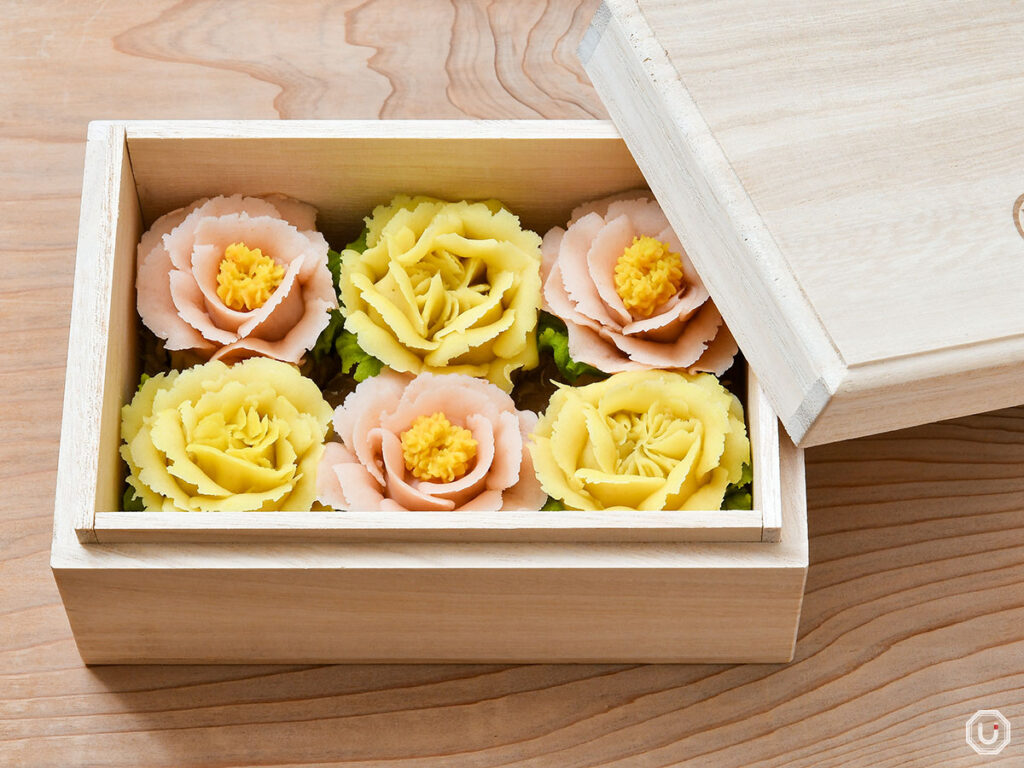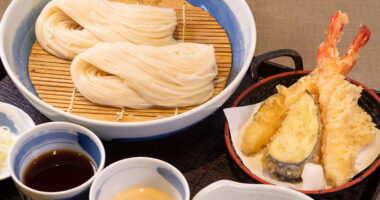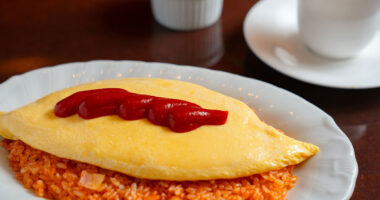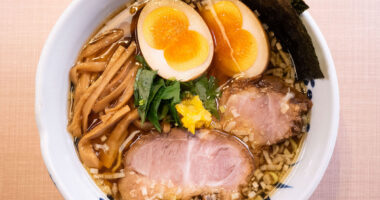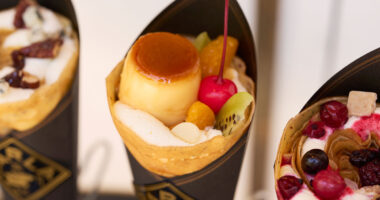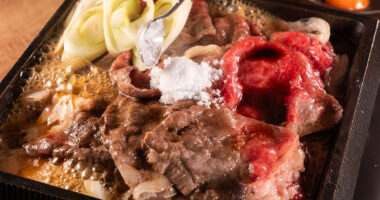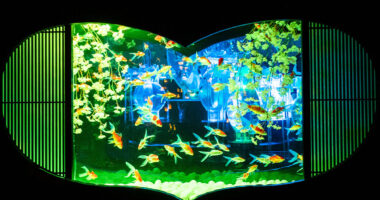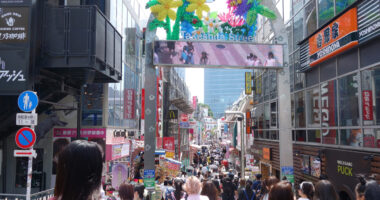Wagashi (traditional Japanese sweets) encapsulate the beauty of the seasons and Japan’s unique culinary aesthetic sensibility. They’re not just for tasting; they’re a feast for the eyes as well.
In Tokyo, wagashi can be found everywhere, from long-established shops to modern stores beloved by younger generations.
Whether it’s for a snack, a gift, or a little reward for yourself, wagashi can suit a variety of occasions. Here, we introduce the charms of these traditional sweets.
Jōnamagashi
When you think of classic wagashi, the first image that comes to mind is often beautifully crafted, delicate jōnamagashi (premium wagashi). Originally created to serve guests at tea ceremonies, these special sweets are a true treat.
Their bite-sized, artistic appearance evokes the seasons just by holding them in your hand.
Among jonamagashi, one of the most representative types is nerikiri.
Nerikiri is made from anko (sweet bean paste), usually white bean paste, combined with binding ingredients such as yam or gyūhi (soft rice mochi) to create a smooth, moldable dough.
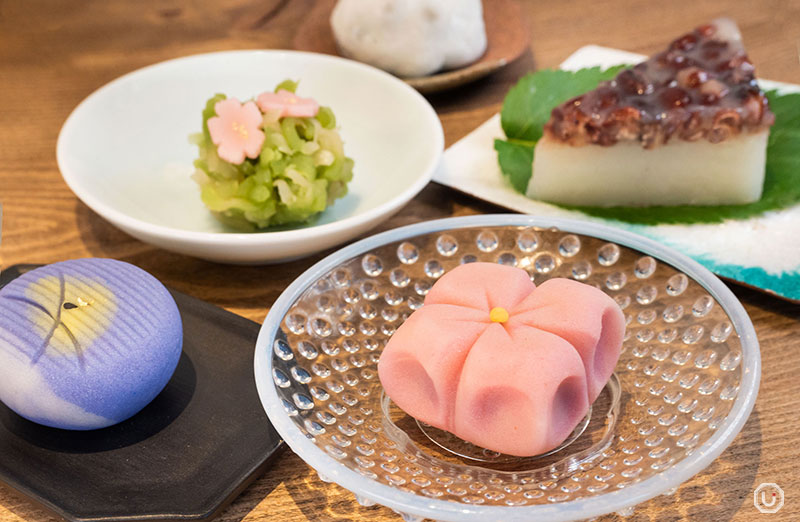
Wagashi at Mahorodou Sougetsu
The added binders allow for delicate designs, but only the skill of a master craftsman can express the layering of petals or the sparkling appearance of morning dew.
Jonamagashi are made using motifs inspired by nature, Japanese seasonal events, and traditions. Each piece carries a small story.
Take a moment to admire them before eating, and you might sense the fleeting beauty of a summer shower, the autumn moon, or winter frost blossoms—scenes that words alone cannot capture.
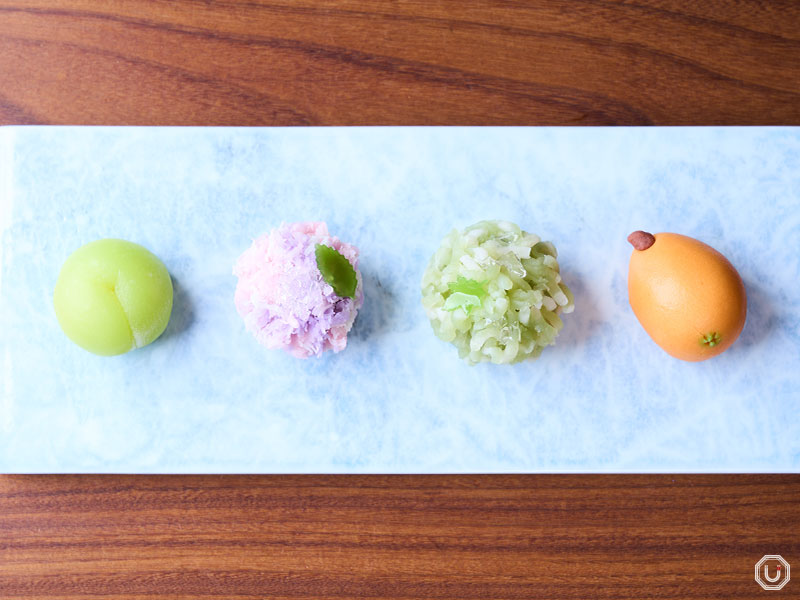
Seasonal Jonamagashi (4 piece set) at Imagashitsukasa Ginza Fugetsudo
Yōkan
Yōkan is a thick, sweet jelly made from bean paste, offering a rich taste that highlights the appeal of anko.
Traditionally made by combining smooth or chunky bean paste with agar and sugar, modern yōkan often incorporates diverse ingredients and colors.
This blend of tradition and creative freedom gives today’s Tokyo wagashi scene its unique charm.
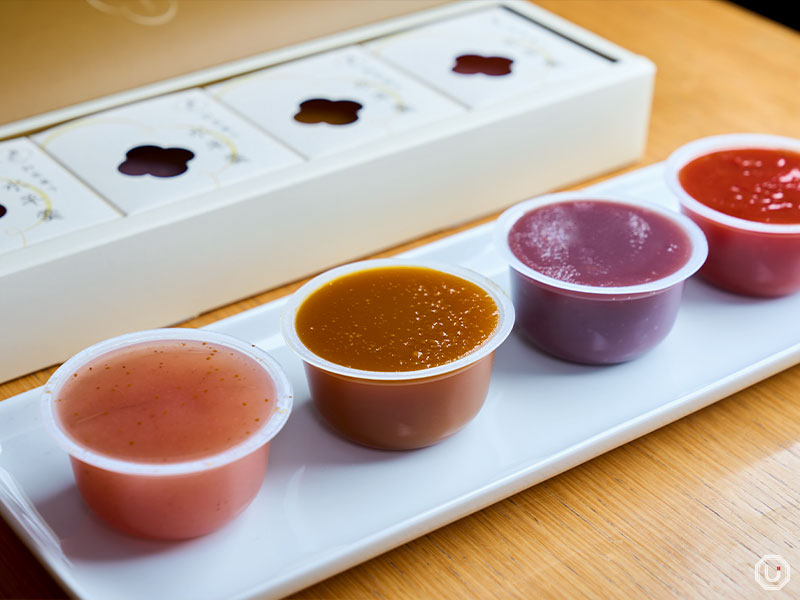
Vegetable mizuyokan 8-piece set at Azabu Yasaigashi
At Azabu-juban’s “Azabu Yasaigashi,” summer’s classic mizuyōkan (jiggly wagashi made from red bean and agar) is paired with vegetables for a unique twist.
Mizuyokan has a smoother texture than regular yokan, making it refreshing and easy to swallow.
The combinations include whole ripe tomatoes, elegant purple sweet potato, pumpkin with a creamy smooth texture, and figs that retain a bit of crunch from their seeds. Each respects the natural taste of the vegetable while maintaining the refined elegance of wagashi.
Dorayaki
Among familiar wagashi loved across generations, dorayaki is a standout.
A simple treat made of fluffy pancakes sandwiching anko, dorayaki showcases the skill and playful creativity of wagashi artisans within its humble form.
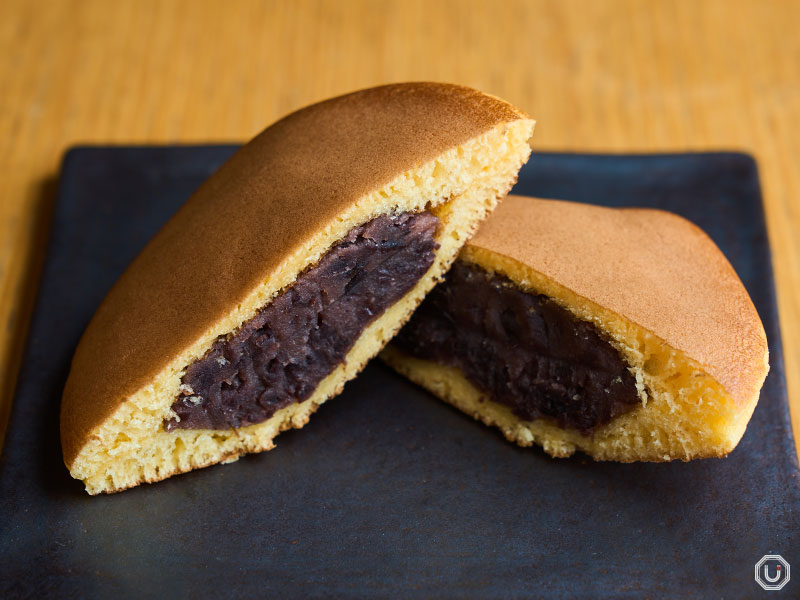
Vegetable paste dorayaki: Organic red bean at Azabu Yasaigashi
The classic combination is lightly sweet, moist pancakes with carefully cooked azuki bean paste. Dorayaki now comes in many variations, with different fillings and toppings expanding its possibilities.
At “Funawa Honten,” in Asakusa, the slightly more sophisticated “Sweet potato butter dorayaki” is sold.
Made with smooth sweet potato paste and creamy, lightly salted butter, sandwiched in moist pancakes, it’s a memorable treat.
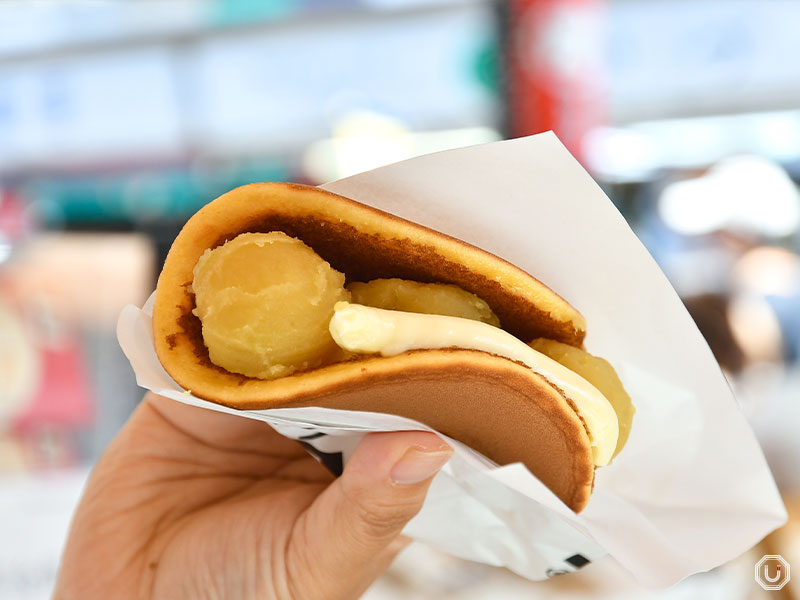
Sweet potato butter dorayaki at Funawa Honten
The subtle sweetness of the red bean paste paired with the rich, savory flavor of butter creates a perfectly balanced contrast. The way the flavors gently unfold across the palate makes it an unforgettable treat from the very first bite.
Even for those who usually associate dorayaki with chunky sweet bean filling, this variation promises a delightful new discovery.
Dango
When it comes to traditional Japanese sweets with an irresistibly cute, round appearance, dango surely comes to mind.
Like dorayaki, dango (traditional Japanese dumplings made with rice flour, often served on skewers) is a familiar treat that can easily be found at convenience stores and supermarkets.
At “Habutae Dango,” a long-established teahouse founded in 1819, the traditional flavors passed down since the Edo period are still carefully preserved today.
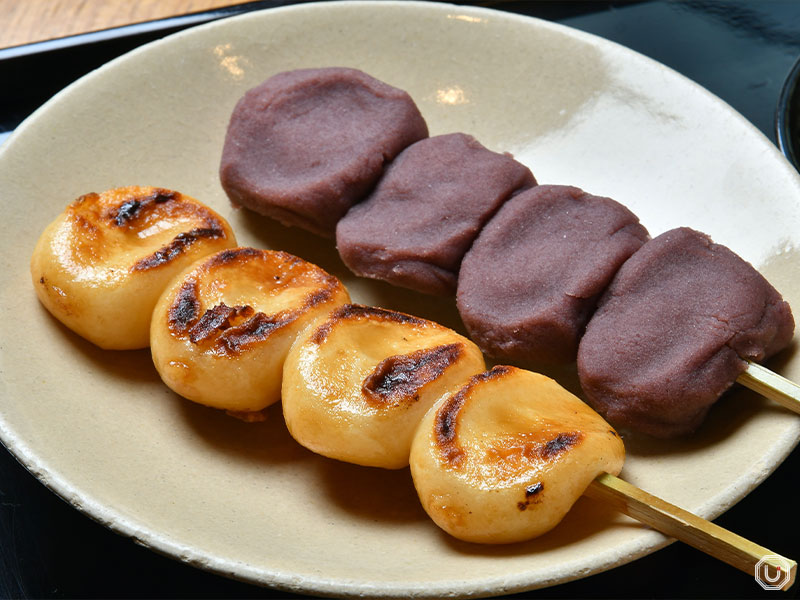
Dango at Habutae Dango
The rice used is Haenuki, a premium brand from Yamagata Prefecture. Grown in the Shōnai region, its firm grains and rich flavor make it especially well-suited for dango making.
What truly sets it apart, however, is the texture.
Pounded to perfection, the dango is astonishingly chewy and tender—so much so that you might not believe it’s made from ordinary non-glutinous rice.
With each bite, it gently yields and melts in the mouth, offering a smoothness reminiscent of fine silk.
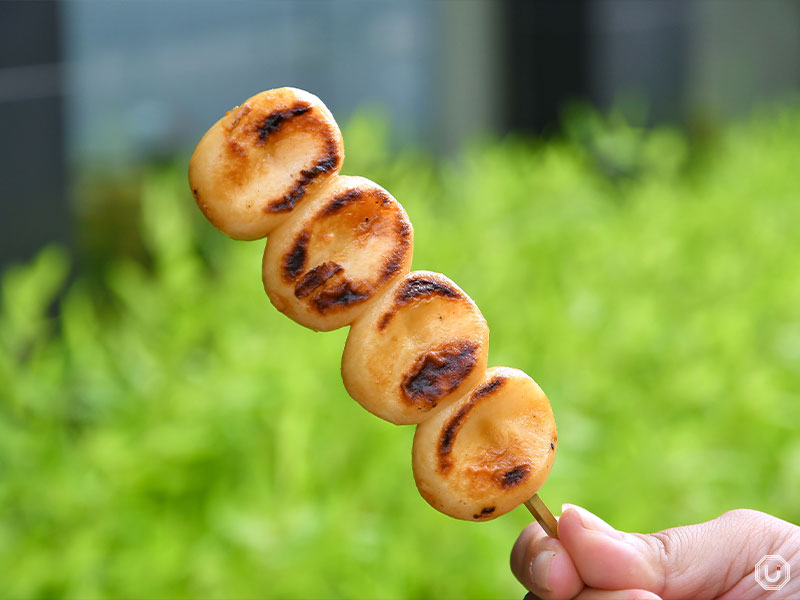
Yaki (grilled) dango at Habutae Dango
Dango comes in many varieties depending on the shop—classic flavors like mitarashi (sweet soy glaze) or kinako (roasted soybean flour) are common. But at Habutae Dango, the lineup is limited to just two.
The first is “An”—a smooth, delicately sweet red bean paste made from Hokkaidō-grown azuki beans. The second is “Yaki”—grilled dango brushed with soy sauce, offering a fragrant, savory flavor.
The simplicity of these two flavors highlights both the quality of the ingredients and the skill of the artisans behind them.
By deliberately focusing on just these two, the shop conveys the quiet pride and confidence of a long-established tradition.
Monaka
Monaka is a traditional Japanese confection consisting of a crisp, paper-thin wafer made from glutinous rice, filled with sweet bean paste.
Its simple structure is what makes it special—the light, toasty crunch of the wafer contrasts beautifully with the rich sweetness of the filling, allowing the flavors to shine through directly.
With a single bite, the fragrance of the wafer, the gentle sweetness of the bean paste, and the essence of the ingredients all unfold at once—a small but delightful surprise.
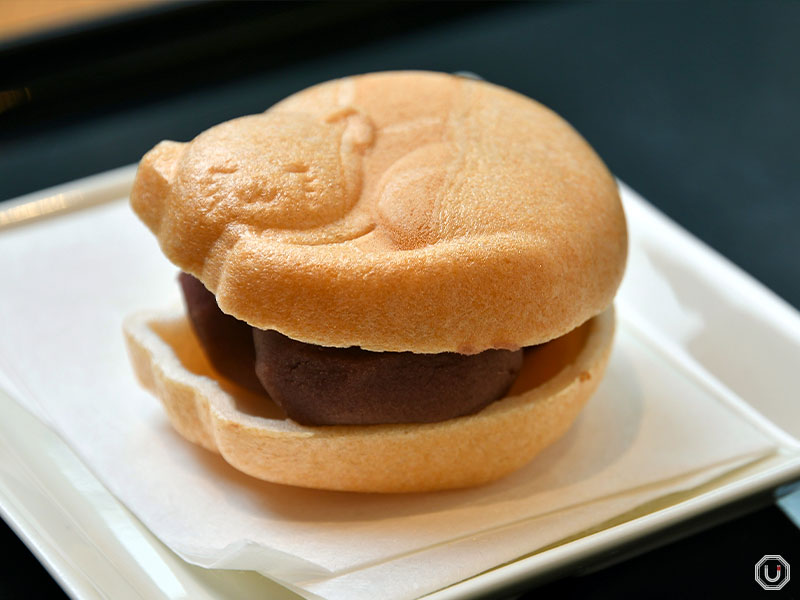
Sōseki Monaka at Habutae Dango
The classic fillings for monaka are smooth or chunky red bean paste. In recent years, however, more seasonal variations have appeared—chestnut, plum, matcha, and other flavors that highlight Japan’s sense of seasonality, giving this traditional sweet new richness and variety.
One shop bringing a modern twist to monaka is the aforementioned Azabu Yasaigashi in Azabu-juban.
Here, they create “Vegetable jam filled wafers,” where the crisp wafers are paired with fillings made from seasonal vegetables, offering a contemporary take on the classic confection.
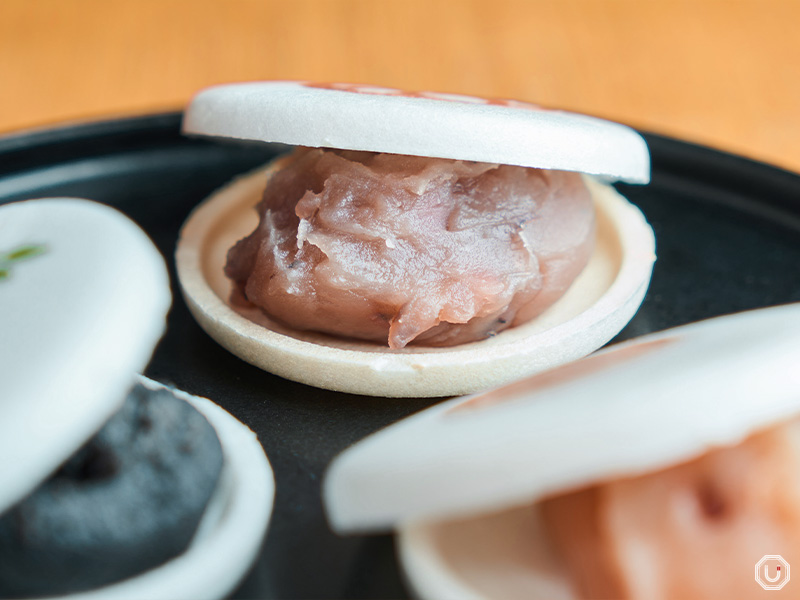
Vegetable jam filled wafers at Azabu Yasaigashi
One standout flavor is the “Black sesame,” where the richness of ground black sesame is lifted by the refreshing aroma of kinome (Japanese pepper leaves) creating a refined, elevated taste.
The “Sweet potato” version features hearty chunks of Kagawa-grown satsumaimo (sweet potato), offering a warm, natural sweetness with every bite.
Perhaps the most unique is the “Lotus root,” with honey-soaked lotus root finely chopped and kneaded into the bean paste for an unexpected texture and flavor.
Another thoughtful touch: the wafers and filling are packaged separately. Just before eating, you assemble them yourself—ensuring the wafers stay perfectly crisp while the filling remains fresh and moist, for a just-made taste experience.
Ohagi
Ohagi is a simple yet comforting treat made from just two ingredients—glutinous rice and sweet red bean paste. Its gentle, rustic flavor is part of its enduring charm.
The history of ohagi is long, with records suggesting it was already enjoyed as far back as the Kamakura period (1185–1333).
Depending on the region or season, it has been called botamochi in spring, after the botan (peony), or ohagi in autumn, after the hagi (bush clover), reflecting their seasonal associations.
Most notably, ohagi is traditionally eaten during the spring and autumn equinoctial weeks (ohigan). This custom, rooted in remembrance of one’s ancestors, brings a quiet warmth to family tables across Japan.
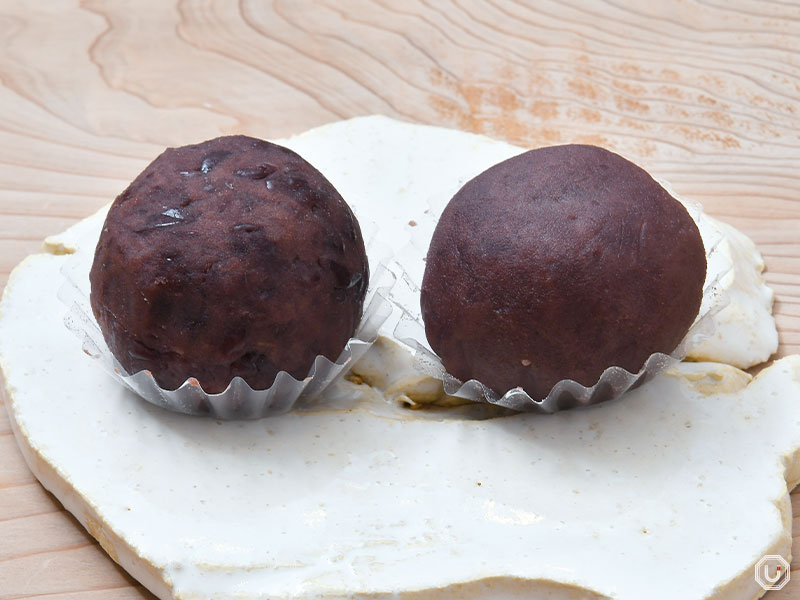
(left) Tsubuan smashed bean paste (right) Koshian smooth bean paste at Takeno to Ohagi
Traditional ohagi is typically made by cooking glutinous rice until just tender, so that each grain retains its texture, and then coating it with carefully prepared sweet red bean paste.
While smooth koshian or chunky tsubuan are the most common fillings, variations with roasted soybean flour (kinako) or dried green seaweed (aonori) add different flavors and textures.
In recent years, new approaches have added an aesthetic dimension to this humble sweet. At “Takeno to Ohagi,” a shop in Tokyo’s Omotesando district, ohagi are transformed into vibrant, flower-like creations.
Their showcase is filled with these jewel-like sweets, each one resembling a delicate work of art as much as a traditional confection.
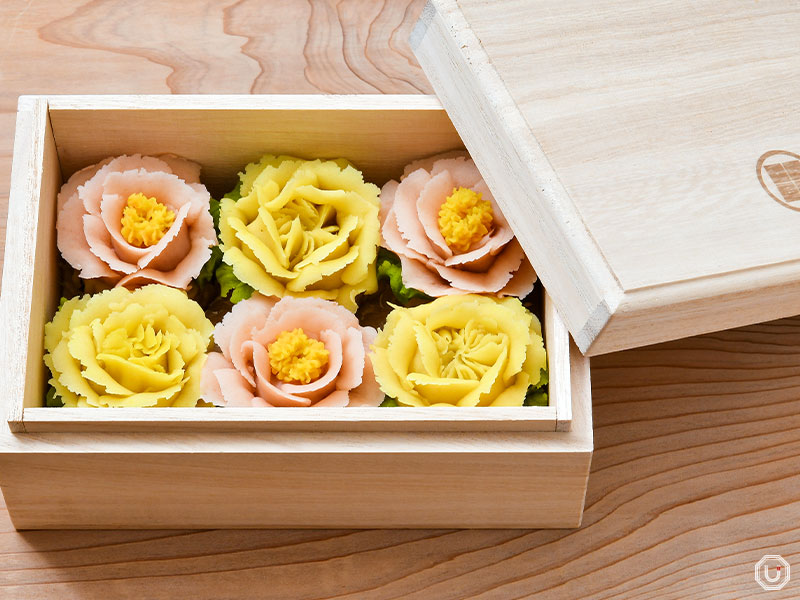
Omotesando-exclusive Box at Takeno to Ohagi
Each piece is carefully handmade, incorporating seasonal ingredients, so the appeal goes beyond their charming appearance—these ohagi deliver authentic, refined flavors.
Colorful creations made with purple sweet potato, matcha, and black sesame showcase the exciting new possibilities of traditional Japanese sweets.
Tokyo is home to many wagashi that beautifully blend long-standing tradition with contemporary sensibilities.
Each piece, crafted with care according to the season and the ingredients, carries not only visual appeal but also a story and heartfelt intention.
If you discover a flavor that captivates you, be sure to visit and enjoy a tour of Tokyo’s wagashi scene.
That single bite is sure to bring a small, delightful richness to your everyday life.
※Menu contents, prices, store information, etc. are current as of August 2025.
